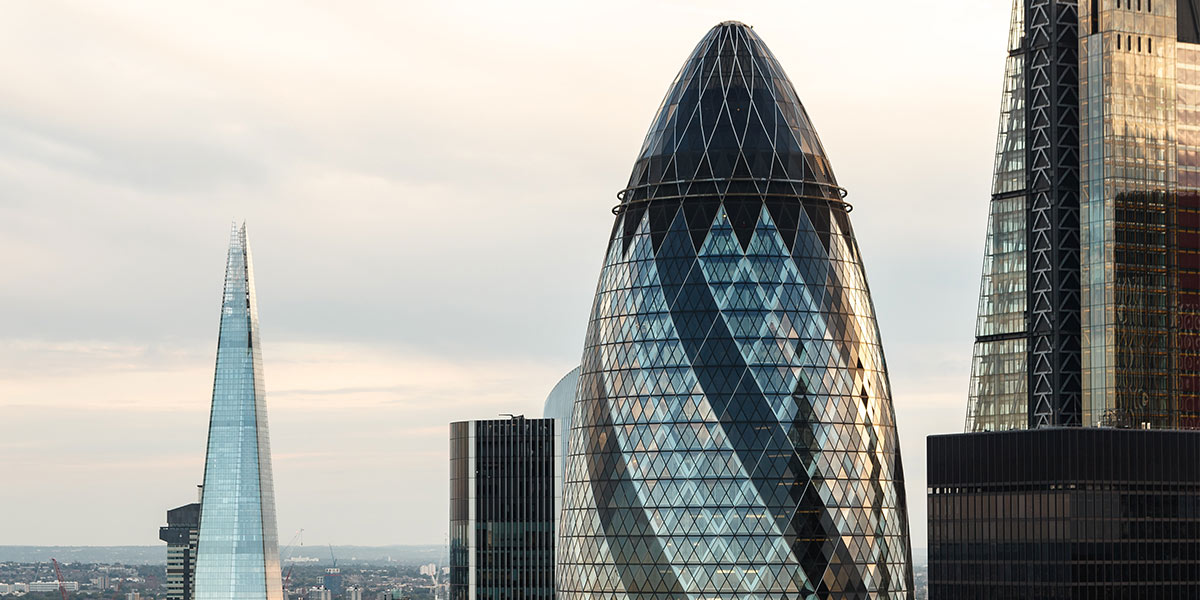As our offices start to fill back up again, we may not be sitting as comfortably as we might have hoped. But we do have reasons to stay cheerful.

Reasons to stay cheerful
As we ease back into our office chairs (even if they’re now actually at home) after the holiday season, we can’t pretend to be sitting particularly comfortably. A lot of things are looking a lot more uncertain than they were at the start of the summer. But that doesn’t mean that the rebound from the pandemic is stalling. Far from it: economic growth remains buoyant versus its pre-pandemic norms.
America’s benchmark S&P 500 index set another record high into the end of August, though it has since trended lower, as have UK and global equities. Major government bond yields stayed near recent lows, having come back down sharply from earlier in the year when inflation fears were rampant. Markets in general seem to be struggling for direction.
How much is the recovery slowing? Will labour market and supply chain disruptions further inflate prices? What can we expect from policymakers? And how are companies holding up?
The global economy certainly seems to have entered a more challenging phase of its post-pandemic recovery. An unhappy confluence of stresses – the Delta variant, a slowdown in China’s economic recovery, alongside sometimes severe product and labour shortages – are exerting a toll. Growth rates are slowing compared with the breakneck pace at which they shot ahead when reopening first began, but we think this is unlikely to morph into something worse.
The modest cooling in growth seems to be curbing some inflationary pressures. Many commodity prices have fallen back, some aggressively. US lumber prices, for example, are down by 70% from their recent peak. But just as key commodity prices have been retreating, supply logjams have been getting worse and driving up the costs of getting vital stuff out to customers. Shipping costs are spiralling higher and surveys suggest that many businesses’ inventory levels are exceptionally low.
Are labour markets working?
Much supply chain disruption seems driven by chronic labour shortages in some industries and sectors. COVID-19 has thrown a huge spanner into labour markets’ supply/demand patterns, particularly in the US and the UK. Fast-growing sectors haven’t got enough staff, while others in terminal decline probably won’t ever rehire all the people they’ve shed. Hiring bottlenecks will take time to clear as people may need retraining before coming back to work in new occupations.
We’re certainly not over-sanguine about how quickly supply chains and labour markets can adjust to cope with post-pandemic demand. The extent of the dislocation in labour markets in particular is unprecedented in the modern era. But we are relatively optimistic that this won’t trigger the persistent wage growth that might risk inflation getting permanently entrenched at its current high levels or spiralling further upward. There just seems to be too much slack (unmet demand for employment) in labour markets. Understandably, some people who are currently out of work may need time to accept that the jobs they had are never coming back. When they do, more people will likely be freed up to fill to jobs in sectors facing chronic staff shortages. The end of the UK’s furlough scheme at the end of September, for example, may see more companies folding or downsizing, providing a supply of workers looking for alternative employment.
The policy direction of travel
Policymakers have long been arguing that inflationary impulses would prove too “transitory” to warrant policy tightening as the world is still recovering from COVID. The US Federal Reserve (Fed) has also emphasised that it won’t consider increasing rates from their rock-bottom levels until it sees signs of a healthy and resilient labour market. We agree that inflation won’t stay stuck at current levels. But there is more uncertainty around where inflation is headed than there has been in a long time. We also think inflation will settle at a higher level than its rate before the pandemic. In the short term, there’s a growing risk that “transitory” might be a bit longer than the market is currently pricing in.
At the same time, quick fixes to big labour market stresses seem elusive. The balance of probabilities seems to favour the US Federal Reserve (Fed) holding off on interest rate hikes for now. But there is a significant risk of bond yields and inflation expectations rising, or at least getting more volatile, between now and the year end.
Time to flex the barbell…
After some stunningly good earnings growth in the third quarter, how are companies holding up in more challenging conditions? It doesn’t look like earnings are suddenly going to fall off a cliff. The latest purchasing managers index (PMI) survey of business expectations, for example, continues to point to a level of economic expansion consistent with growing earnings.
But recent equity market pullbacks suggest that investors are more nervy about stretched valuations, cost pressures and tamer growth. Some equities may struggle in the final quarter of the year. Growth-oriented markets and sectors have outperformed significantly since June. But their high valuations mean they could prove particularly vulnerable if their earnings start to disappoint.
The more uncertain macroeconomic backdrop suggests now is an opportune moment to opt for a barbell approach – on one side of the barbell, companies that are likely to do well in rising markets and on the other side those that offer more protection on the downside. These would roughly fall into the respective camps of growth and value (cheaper) stocks and those with more defensive characteristics that enable their earnings to hold up better in harder economic times.

